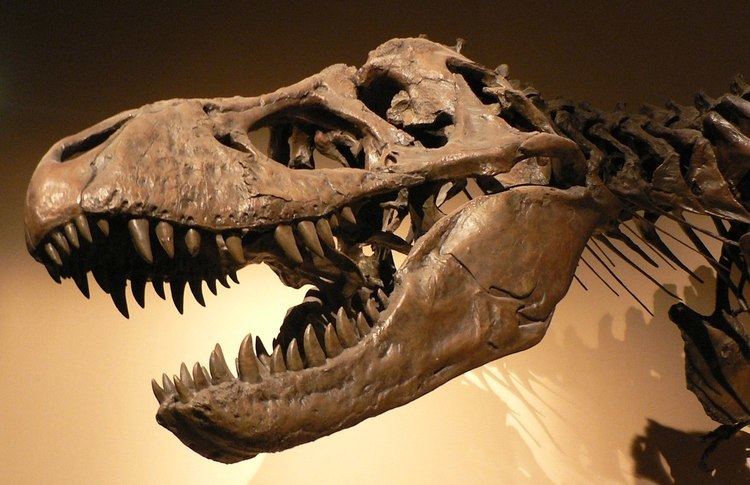 | ||
Paleobiology (sometimes spelled palaeobiology) is a growing and comparatively new discipline which combines the methods and findings of the natural science biology with the methods and findings of the earth science paleontology. It is occasionally referred to as "geobiology".
Contents
Paleobiological research uses biological field research of current biota and of fossils millions of years old to answer questions about the molecular evolution and the evolutionary history of life. In this scientific quest, macrofossils, microfossils and trace fossils are typically analyzed. However, the 21st-century biochemical analysis of DNA and RNA samples offers much promise, as does the biometric construction of phylogenetic trees.
An investigator in this field is known as a paleobiologist.
Important research areas
Paleobiologists
The founder or "father" of modern paleobiology was Baron Franz Nopcsa (1877 to 1933), a Hungarian scientist trained at the University of Vienna. He initially termed the discipline "paleophysiology."
However, credit for coining the word paleobiology itself should go to Professor Charles Schuchert. He proposed the term in 1904 so as to initiate "a broad new science" joining "traditional paleontology with the evidence and insights of geology and isotopic chemistry."
On the other hand, Charles Doolittle Walcott, a Smithsonian adventurer, has been cited as the "founder of Precambrian paleobiology." Although best known as the discoverer of the mid-Cambrian Burgess shale animal fossils, in 1883 this American curator found the "first Precambrian fossil cells known to science" – a stromatolite reef then known as Cryptozoon algae. In 1899 he discovered the first acritarch fossil cells, a Precambrian algal phytoplankton he named Chuaria. Lastly, in 1914, Walcott reported "minute cells and chains of cell-like bodies" belonging to Precambrian purple bacteria.
Later 20th-century paleobiologists have also figured prominently in finding Archaean and Proterozoic eon microfossils: In 1954, Stanley A. Tyler and Elso S. Barghoorn described 2.1 billion-year-old cyanobacteria and fungi-like microflora at their Gunflint Chert fossil site. Eleven years later, Barghoorn and J. William Schopf reported finely-preserved Precambrian microflora at their Bitter Springs site of the Amadeus Basin, Central Australia.
Finally, in 1993, Schopf discovered O2-producing blue-green bacteria at his 3.5 billion-year-old Apex Chert site in Pilbara Craton, Marble Bar, in the northwestern part of Western Australia. So paleobiologists were at last homing in on the origins of the Precambrian "Oxygen catastrophe."
